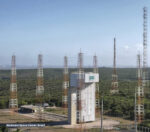The Netherlands has secured a significant industrial role in the production and sustainment of the Airbus H225M Caracal multirole helicopter fleet. This development follows the Dutch Ministry of Defence’s (MoD) selection of the platform to replace its aging fleet of AS532U2 Cougar helicopters. The agreement not only strengthens the Royal Netherlands Air Force’s rotary-wing capabilities but also cements Dutch industry’s position within a key European defense program.
Airbus H225M Selected to Replace Dutch Cougar Fleet
In June 2024, the Dutch MoD announced its decision to procure 14 Airbus H225M Caracal helicopters to replace its fleet of 12 AS532U2 Cougars by 2028. The Cougar fleet has been in service since 1996 and is nearing obsolescence. The H225M was selected over other contenders such as Sikorsky’s UH-60M Black Hawk and Leonardo’s AW101 due to its proven performance in special operations support (SOF), combat search-and-rescue (CSAR), and long-range tactical transport missions.
The H225M is a heavy-lift twin-engine helicopter with a maximum takeoff weight of 11 tonnes. It can carry up to 28 troops or over 5 tonnes of cargo internally or externally. Its modular architecture allows for rapid reconfiguration between troop transport, medevac, CSAR, or cargo missions. With an operational range exceeding 850 km (extendable via air-to-air refueling), it is optimized for expeditionary operations — particularly relevant given the Netherlands’ NATO commitments and overseas deployments.
Industrial Participation: Dutch Firms Take Center Stage
As part of the procurement deal with Airbus Helicopters, several Dutch companies will be integrated into the production and sustainment ecosystem for the H225M. Notably:
- Stork (a subsidiary of Fokker Services Group) will be responsible for structural components and subassemblies.
- StandardAero Netherlands will provide maintenance, repair, and overhaul (MRO) services for Makila 2A1 turboshaft engines powering the H225Ms.
- TNO, the Dutch Organization for Applied Scientific Research, is expected to support mission system integration and survivability enhancements tailored to RNLAF requirements.
This industrial involvement aligns with broader Dutch defense-industrial policy objectives aimed at preserving sovereign MRO capabilities and ensuring lifecycle support autonomy. It also reflects NATO-wide efforts to bolster European defense industrial cooperation amid rising geopolitical tensions.
MRO Hub Potential and Export Opportunities
The inclusion of Dutch firms in critical roles opens opportunities beyond national fleet sustainment. StandardAero Netherlands could evolve into a regional MRO hub for Makila engines used across multiple European operators including France, Brazil, Malaysia, Hungary, Indonesia, Thailand, Kuwait, Mexico — all current users of the H225M platform.
This localization also reduces logistical dependency on OEM facilities abroad while enabling faster turnaround times for deployed assets. If successful, it could position the Netherlands as a key node within Airbus Helicopters’ global support network — especially as more NATO countries consider heavy-lift helicopter upgrades under common funding mechanisms like NATO Support and Procurement Agency (NSPA).
Operational Implications for RNLAF Special Forces Support
The Royal Netherlands Air Force operates its SOF aviation component under No. 300 Squadron based at Gilze-Rijen Air Base. The new Caracals are expected to significantly enhance this unit’s operational reach and survivability thanks to advanced avionics suites including:
- Thales TopOwl helmet-mounted display systems
- Spectrolab SX-16 searchlights
- Self-protection suites with missile warning systems (MAWS), radar warning receivers (RWR), chaff/flare dispensers
- Tactical data links compatible with NATO C4ISR networks
The aircraft can also be fitted with door-mounted FN MAG machine guns or pintle-mounted Dillon Aero M134 miniguns depending on mission profiles. For CSAR tasks or SOF insertions under fire, these features represent a substantial upgrade over legacy Cougars lacking modern threat detection or countermeasures suites.
A Step Toward Greater European Defense Integration
The selection of an Airbus platform over transatlantic competitors underscores growing momentum toward intra-European defense procurement harmonization — particularly among smaller NATO states seeking interoperability without sacrificing industrial participation.
This mirrors similar moves by Hungary (which ordered 16 H225Ms in recent years) and Germany (which uses variants for CSAR roles). By embedding domestic firms into multinational supply chains while aligning platforms across allies’ inventories, countries like the Netherlands aim to strengthen both strategic autonomy and alliance cohesion.
Conclusion: Industrial Offset Meets Operational Need
The integration of Dutch industry into the Airbus H225M program represents more than just an offset clause — it reflects deliberate policy choices balancing capability acquisition with economic benefit. As deliveries begin post-2026 with full operational capability expected by late-2028 or early-2029, attention will shift toward ensuring seamless transition from Cougar operations while scaling up domestic sustainment infrastructure.










